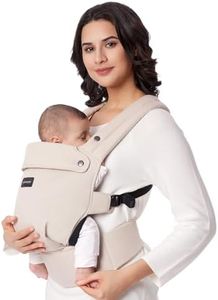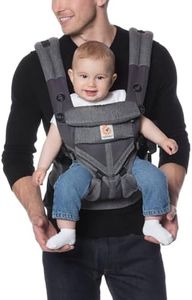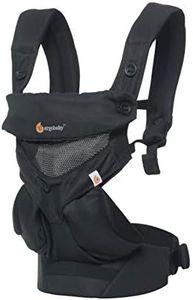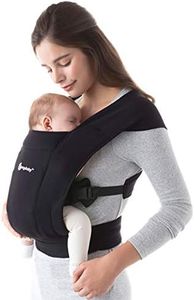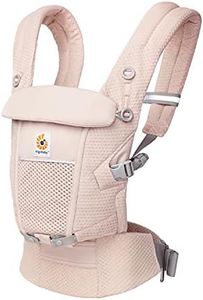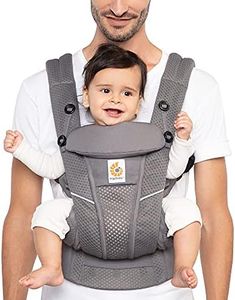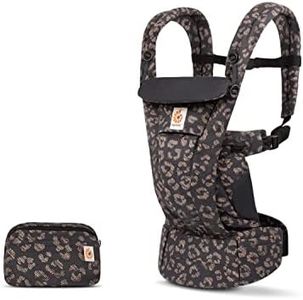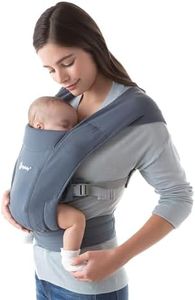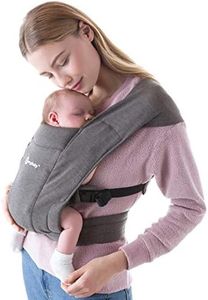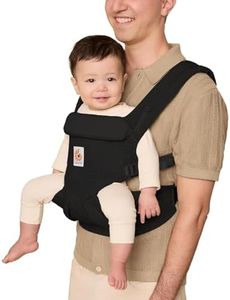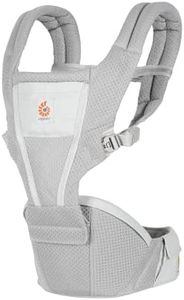We Use CookiesWe use cookies to enhance the security, performance,
functionality and for analytical and promotional activities. By continuing to browse this site you
are agreeing to our privacy policy
10 Best Ergobaby Carriers
From leading brands and best sellers available on the web.Buying Guide for the Best Ergobaby Carriers
Choosing the right baby carrier is about finding something comfortable, safe, and convenient for both you and your baby. A good carrier supports your baby’s body, is easy to put on and adjust, and suits your daily activities—whether it’s long walks, quick errands, or soothing a fussy baby at home. Understanding the different features will help you match a carrier to your lifestyle and your growing child’s needs.Carrying PositionsCarrying positions refer to how and where you can position your baby—such as front-inward, front-outward, hip, or back. This is important because babies have different support and visibility needs at each age and stage. Some carriers offer only one or two positions, while others can accommodate three or four. If a newborn or young baby will be using the carrier most, front-inward is vital; for older, curious babies, outward or back positions help them explore. Think about how you’ll use the carrier over time and whether you want the flexibility of many positions as your child grows.
Weight and Age RangeThis spec tells you the smallest and largest sizes of babies the carrier can safely hold. It’s important for both safety and value—too small or too large and it won’t work for your child. Carriers for newborns often go down to 7-8 pounds, while some models can carry toddlers up to 40-45 pounds. If you intend to use the carrier from birth, look for one with a low starting weight (sometimes with an infant insert). For long-term use, a higher maximum helps as your child grows.
Adjustability and FitAdjustability describes how easily you can change the carrier’s fit for different body sizes. This matters if more than one person will be using the carrier, or if you want a comfortable, snug fit as your baby grows. Some carriers use simple straps, buckles, or Velcro to make switching sizes easy, while others are more fixed. If you or your partner are of different body types, look for highly adjustable carriers, and always test how easily you can put on and change the fit by yourself.
Support and PaddingSupport and padding help keep both you and your baby comfortable by reducing pressure on your shoulders, back, and hips. For long wearing sessions, look for wide, padded straps, a strong waistband, and soft—but firm—support in the seat and back panel. If you plan to wear the carrier for extended periods, such as while traveling, prioritize extra padding and good lumbar support. For quick or occasional use, lighter models with basic padding can be enough.
Breathability and FabricBreathability indicates how well the fabric allows air to circulate. This is important for avoiding overheating, especially in warm climates or during summer. Some carriers use mesh panels or lightweight cotton for better cooling, while others are made of thicker, warmer fabric for colder environments. Think about your local climate, how active you’ll be, and whether you and your baby tend to get warm easily. Choose breathable models for hot weather, and cozier ones for cooler seasons.
Ease of CleaningEase of cleaning tells you how simple it is to wash and care for the carrier. Babies can be messy, so a carrier that can be tossed into the washing machine or spot-cleaned quickly saves effort. If you expect frequent spills, drool, or diaper leaks, look for machine-washable carriers. If easy care isn’t a top concern (for example, if you’ll use the carrier only occasionally), then more delicate or hand-wash-only fabrics could still work.
